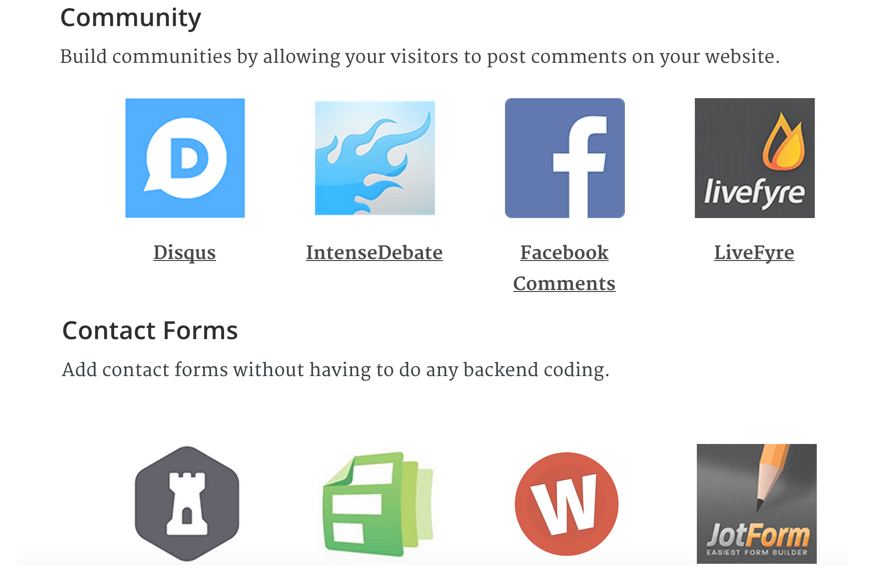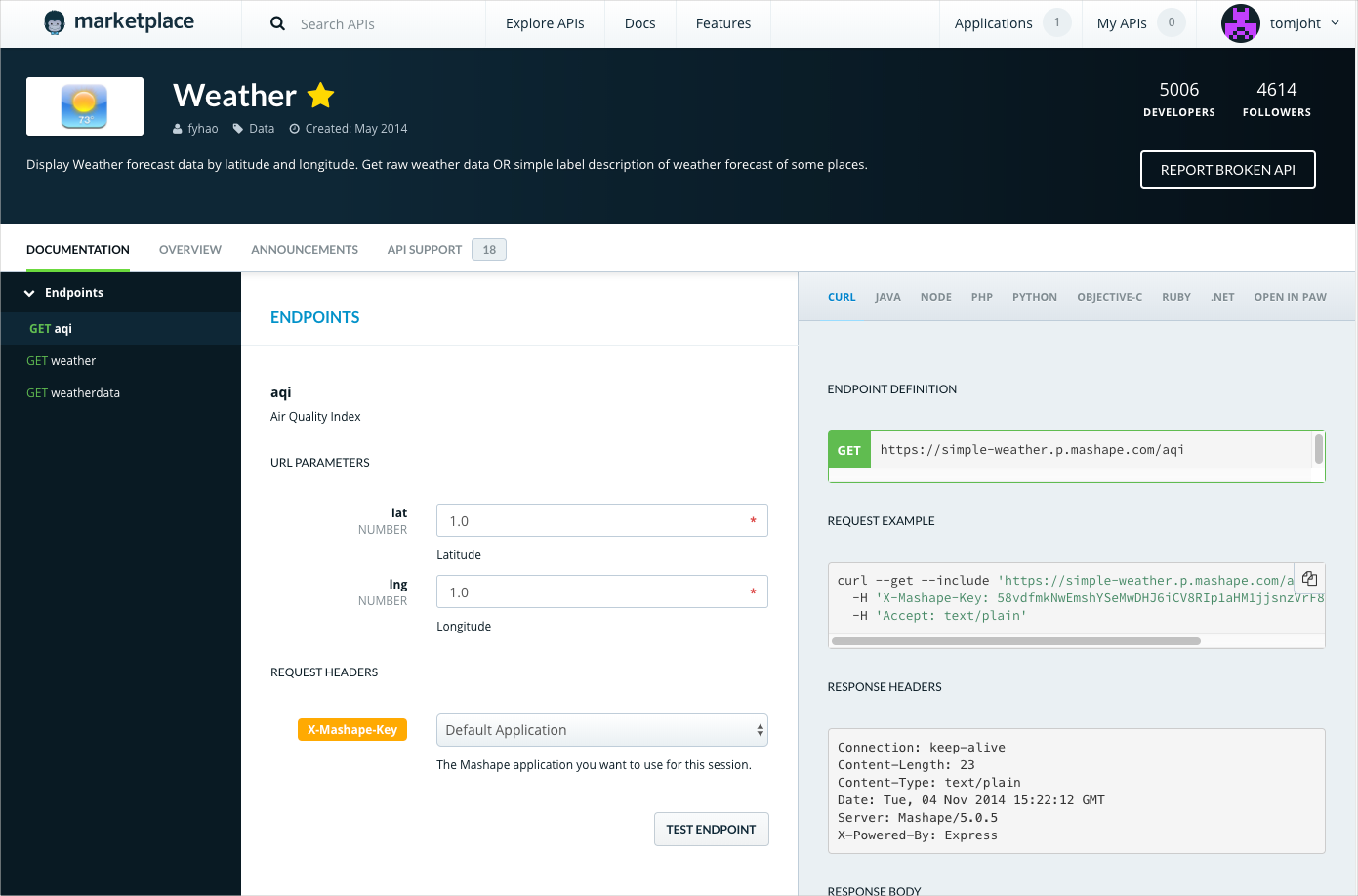Intro to API documentation
By Tom Johnson / @tomjohnson
idratherbewriting.com
Slides available at
idratherbewriting.com/intro-to-api-documentation/
Video recording
The following is a video recording of this presentation.
Documenting REST APIs

The market for REST API doc
Doc is the interface

REST API growth

Services mashup

What is a REST API?
Allows systems to interact

Functions below interfaces

Requests and responses

The web follows REST

Sample API scenario
Retrieve weather info
See also yahoo weather
Simple weather API

Get API keys

Submit requests
Postman

curl
curl --get --include 'https://simple-weather.p.mashape.com/weatherdata?lat=37.3710062&lng=-122.0375935' \
-H 'X-Mashape-Key: EF3g83pKnzmshgoksF83V6JB6QyTp1cGrrdjsnczTkkYgYrp8p' \
-H 'Accept: application/json'
cURL commands
| Command | Description |
|---|---|
-i or --include |
Include response headers |
-d or --data |
Include data to post |
-H or --header |
Submit header |
-X POST |
The HTTP method to use |
@filename |
Load content from a file |
Analyze responses
JSON objects:
{
"key1":"value1",
"key2":"value2"
}
JSON arrays:
["first", "second", "third"]
Log the response to the console

Use dot notation to access values
Wind speed:
data.query.results.channel.wind.speed
Wind direction:
data.query.results.channel.wind.direction
Wind chill:
data.query.results.channel.wind.chill
Result

Documenting endpoints
- Resource description
- Resource URL
- Methods
- Parameters
- Request example
- Response example
- Status and error codes
- Code samples
1. Resource descriptions
Description
The information contained in the resource — brief (1-3 sentences) and usually starts with a verb.
Example

Resource terminology varies
- API calls
- Endpoints
- API methods
- Calls
- Resources
- Objects
- Services
- Requests
2. Resource URL
Description
The URL path where the resource can be accessed. Doesn't include the base path.
Example

Put path parameters in curly braces
/campaigns/{campaign_id}/actions/send
3. Method
Description
The operations allowed for the resource URL (GET, POST, PUT, DELETE, etc.)
Example

Grouping operations
The same resource often has multiple operations, so organize them as it makes sense for your API.
4. Parameters
Description
Options you can use with the endpoint. There are four types of parameters: header, path, query string, and request body.
Example

Parameter order is irrelevant
/surfreport/{beachId}?days=3&units=metric&time=1400
/surfreport/{beachId}?time=1400&units=metric&days=3
Note the data types if important
- string
- integer
- boolean
- object
Request body parameter example
{
"days": 2,
"units": "imperial",
"time": 1433524597,
"active": true
}
5. Request example
Description
A sample request to the resource, showing the endpoint and parameters configured.
Example

API Explorers provide interactivity

Requests can be dangerous
Requests execute real operations on the client's data. It isn't a sandbox.
6. Response example
Description
Sample response from a request (not comprehensive of all parameter configurations or operations).
Example

Strategies for nested objects

Tripane help design

7. Status and error codes
Description
Code in the response that indicates a general status of the response. Most status codes (e.g., 200, 302, 500, etc.) are standard.
Often included with response
Status codes are often included with the response examples.
Example

8. Code samples
Description
Sample code snippets for submitting a request to the endpoint using a particular programming language. Optional.
Target expected user languages

This code can be auto-generated

Putting it all together

API doc course sections
- Introduction to REST APIs
- Using a REST API like a developer
- Documenting endpoints
- Testing your API documentation
- Documenting non-reference sections
- Publishing your API documentation
- OpenAPI specification and Swagger
- Documenting native library APIs
- Getting a job in API documentation
- Resources and glossary
Questions?
The end

Tom Johnson
— idratherbewriting.com
— @tomjohnson
— [email protected]
